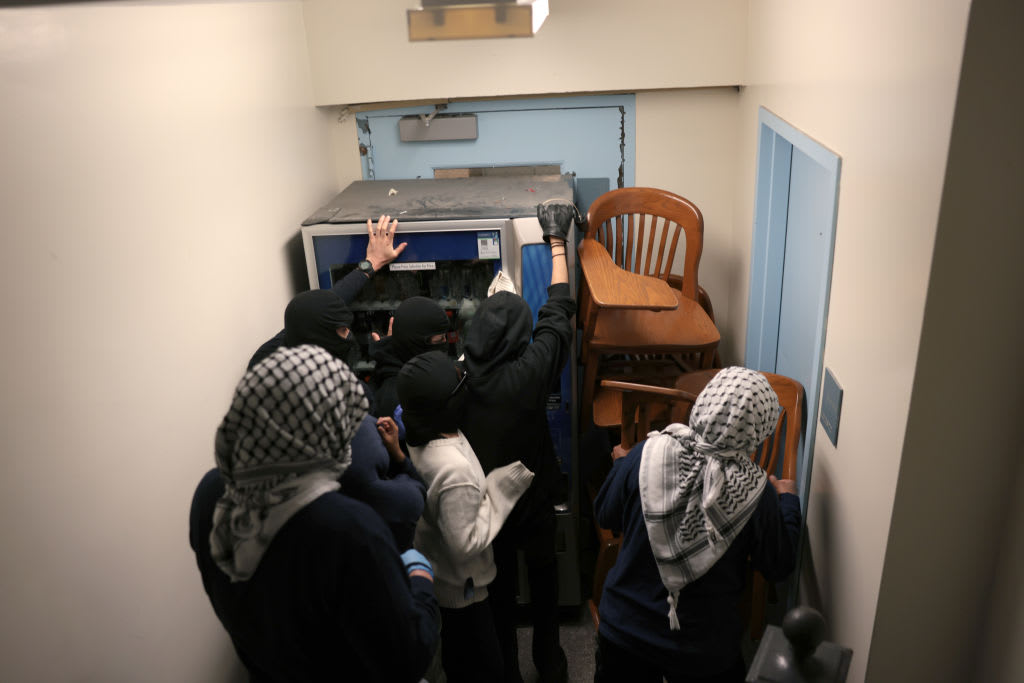Yesterday, The Free Press published an exclusive interview with Mario Torres, a facilities worker at Columbia who was photographed fighting off a pro-Palestinian protester as a mob invaded Hamilton Hall on April 30. A GoFundMe raising money for Torres’s potential legal fees surpassed the target of $18,000 in hours. The total has since reached more than $30,000.
Now, two of Torres’s colleagues, Lester Wilson and Jesse Wynne, who were also working in the building with him that night, tell The Free Press they feel betrayed not only by the university—which their union is now suing on their behalf—but by the student protesters who put them in harm’s way. Here’s Francesca Block with the story. . .
Lester Wilson first noticed something was off during his night shift working at Columbia’s Hamilton Hall when he heard a commotion coming from the hallway—which was supposed to be empty. The 47-year-old, who said he’s worked at Columbia facilities for five years, stepped out of the men’s restroom on the third floor where he was cleaning and saw a group of masked protesters taking chairs from nearby classrooms.
“I said, ‘Yo, put the chair down,’ but he carried it down the stairs.”
“Within seconds,” Wilson said, what were two or three protesters multiplied to at least 20 or so masked figures all running into the building, taking furniture, and barricading the doors behind them.
Another custodian, Jesse Wynne, 37, said he thinks a girl who had been hiding out in the building let the mob inside. He said he saw her run down Hamilton Hall’s stairs, her face covered by a black and white keffiyeh, to throw the doors open to the crowd outside.
Wilson and Wynne say protesters trapped them inside the building alongside their colleague Mario Torres by using chairs, tables, vending machines, chains, and zip ties to block any entrances or exits. “I was held hostage,” Wilson said. He remembers yelling, “Let me out! I’m a worker!”
Wynne said two protesters found him hiding in a hallway on the sixth floor, grabbed him by the arm and forced him to the second floor, and then went on to disable the elevator.
“We were already barricaded in and there was no way out,” Wynne added. “I didn’t know what the fuck was going on.”
Now the Transport Workers Union, which represents employees in service sectors including university maintenance crews, is suing Columbia for not protecting its members. In a letter to Columbia president Minouche Shafik, union president John Samuelsen wrote: “Imagine yourself coming to work and being the victim of a serious crime because Columbia University didn’t care enough about you to engage in common sense protective measures.”
Four days before the invasion, on April 25, Wilson said he discovered a girl hiding in one of the janitor’s closets. He said he reported her to public safety and notified his department head, but says his concerns were ignored. “That was the warning right there,” Wilson said.
Wilson said there was only one guard present on the night of the invasion, but when he got downstairs to the lobby, he said she “was nowhere in sight.” She had apparently fled before protesters locked all the doors.
“The building is right next to the encampment. Why would you just have one guard? Why don’t you have a police presence?” Wilson asks with frustration. “They should have known.”

Wilson added, “It felt like they didn’t even care. They were just worried about the protesters—don’t hurt the protesters. What about the safety and security of the workers that’s working in the building under these conditions?”
When asked what he thought the protesters were trying to accomplish that night, Wilson just shrugged. “They didn’t really accomplish anything but destruction and fear.”
“You all were taking over our home,” Wilson said. “This is our home, this is where we work. We should feel safe in all of the buildings that we work in. We shouldn’t have to question if public safety is going to protect us.”
“Protesting peacefully is one thing,” Wynne added, “but you can’t call this a peaceful protest when you are destroying property. I didn’t mind what they were doing outside, but taking over a building is something different.”
Unlike Torres, who said he is still too scared to set foot on campus, Wilson and Wynne have since returned to work—but they refuse to go back to Hamilton Hall.
“I’m not going back to that building ever,” Wilson told me.
He said he cries every time he thinks back to the incident.
“I’m traumatized,” he said. “I could have been killed in there.”
Francesca Block is a reporter for The Free Press. Read her piece “The ‘Micro-Intifada’: American Protesters Are Being Trained in ‘Militancy’ ” and follow her on Twitter (now X) @FrancescaABlock.
Become a Free Press subscriber today:









